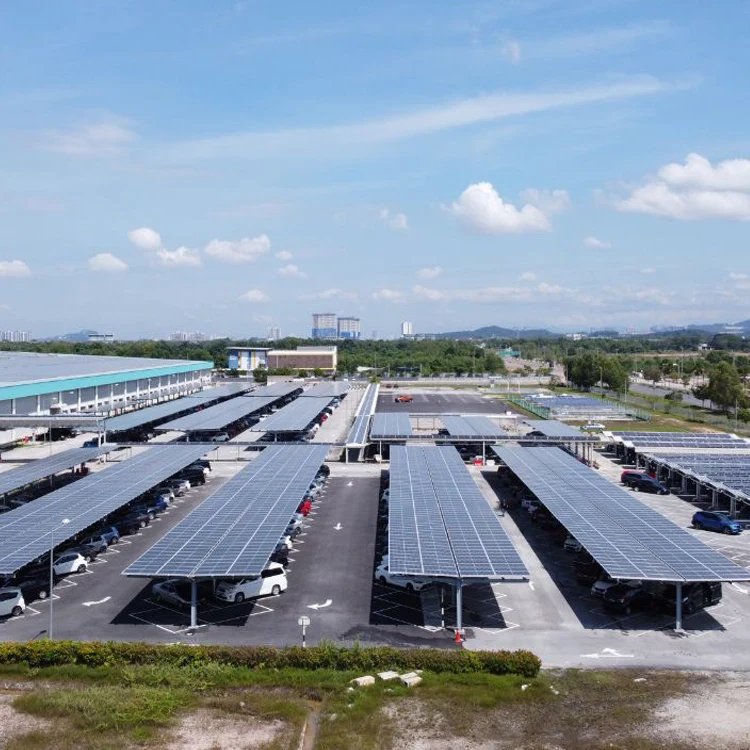-
2103 Room NO.322 Xinggang One Road,Haicang District,Xiamen Fujian,China

What Causes Corrosion in Solar Mounting Structures? Prevention Tips You Need to Know
Corrosion of solar mounting systems is a major concern for both residential and commercial PV installations. If left untreated, it can severely impact the structural integrity and efficiency of solar power plants. This article explores the main causes of corrosion and effective strategies to prevent it, ensuring long-term stability and safety.
Table of Contents
What Is a Solar Mounting System?
A sistema de montaje solar (also known as a racking system) is the structural framework that holds solar panels in place. These racks ensure panels are set at the right angle and orientation to optimize sunlight capture. They are used in various settings:
- Ground-mounted solar farms
- Agricultural fields
- Rooftops (metal, tile, flat)
- Carports and parking areas
👉 Explore our Sistema de montaje solar en suelo for utility-scale solutions.

Why Do Solar Mounting Frames Rust?
Age-Related Material Degradation
Over time, exposure to rain, snow, UV rays, and temperature shifts can deteriorate metal surfaces, especially if maintenance is neglected.Installation in Coastal or Salt-Affected Zones
Areas near the sea face salt corrosion. The salt particles in the air and rain aggressively degrade unprotected steel structures.
Example from Japan: Many coastal PV systems in Japan experience accelerated wear due to high salt concentration in the air, especially in regions like Okinawa or Chiba.
Galvanic Corrosion Between Dissimilar Metals
When two different metals (like aluminum and stainless steel) come into contact with moisture, one metal becomes anode and corrodes faster.
Improper Ground or Foundation Preparation
If a structure is built on soil with high acidity or without anti-corrosion insulation, the metal may rust from the bottom up.

Five Proven Ways to Prevent Rust on Mounting Systems
Use Compatible Metals
Avoid mixing metals that react with each other. Stick with the same metal or use non-conductive spacers to prevent galvanic corrosion.
👉 Compatible components like our Stainless Steel Solar Panel Grounding Clips help maintain electrical isolation.
Choose Rust-Resistant Materials
Use materials with natural or treated corrosion resistance, such as anodized aluminum or hot-dip galvanized steel.
- Example: Our C – Steel Ground Mount – Screw Pile Foundation features corrosion-treated surfaces ideal for challenging environments.
Apply Protective Coatings
Anti-rust coatings or zinc-rich primers significantly slow down the oxidation process.
Avoid Installing in High-Salinity Areas
Where possible, avoid placing systems in heavy salt-damage regions unless using specialized anti-corrosion structures.Regular Inspections and Maintenance
Partner with a provider that offers scheduled inspections to detect early signs of corrosion or wear.

Consequences of Unchecked Corrosion
- Structural failure under wind or snow load
- Panel misalignment, leading to energy loss
- Increased maintenance costs or full system replacement
- Electrical hazards from weakened grounding paths
Recommended Rust-Resistant Products
To safeguard your investment, choose mounting systems with built-in anti-corrosion features. Here are a few examples:
- 🧱 Aluminum Ground Mount – Screw Pile Foundation
- 🧩 HDPE Plastic Solar Ballast Mounting System
- 🛠️ Hot Dip Galvanized C-shaped Steel Support Bracket
Final Thoughts
By understanding why solar racking structures rust and taking steps to prevent it, you can significantly extend the life of your solar PV system. Smart material choices, regular maintenance, and expert guidance are key.
For durable, corrosion-resistant solar mounting solutions, choose Firstsolar — your reliable global supplier.








